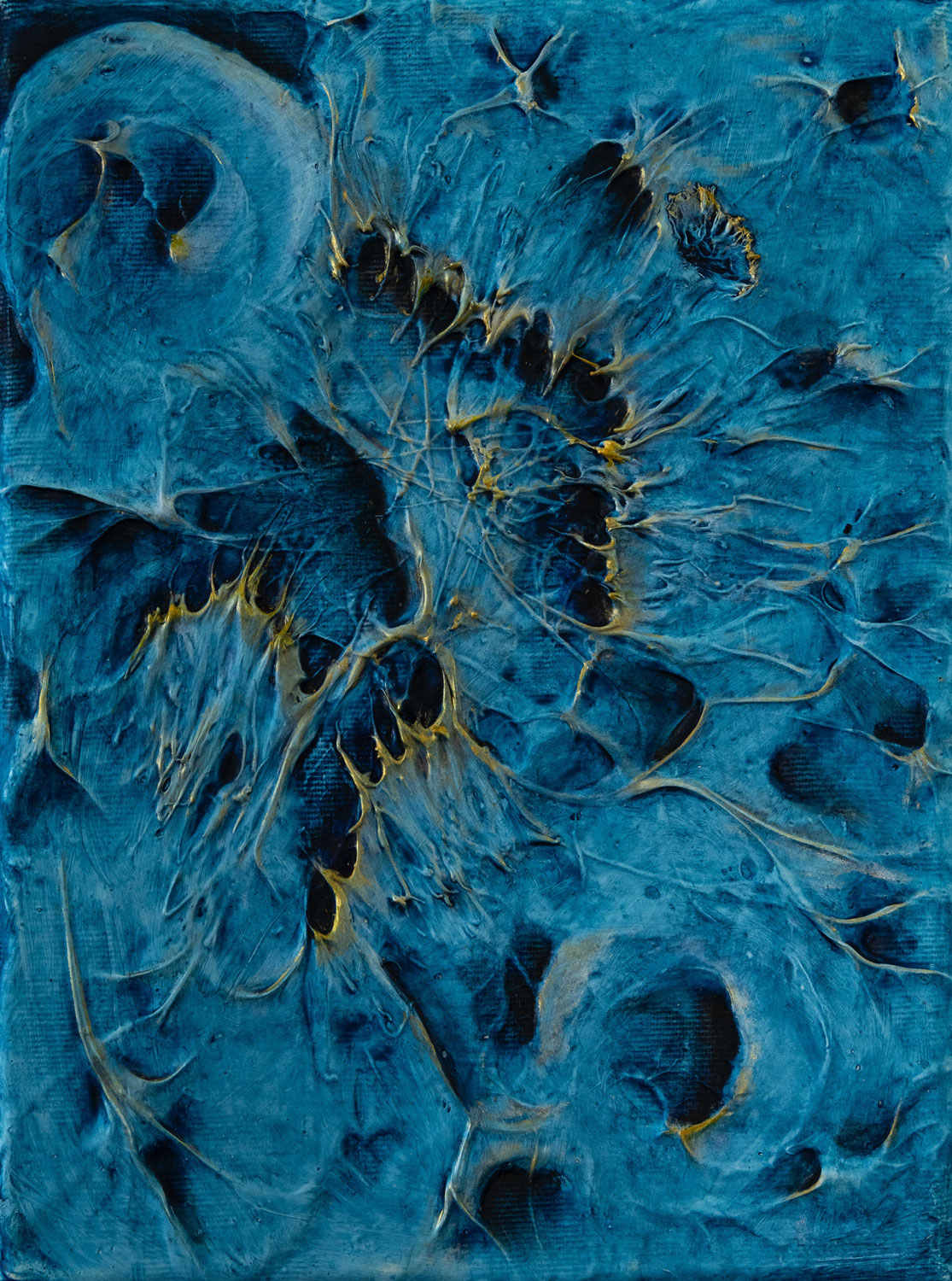
ONEIRIC.SPACE
Interview 003, Art, Science, Philosophy, Psychology, Spirituality
Artist and scientist Fariba Bogzaran on taking a holistic approach to dreams
Interview by Charmaine Li

1
ARTIST AND SCIENTIST FARIBA BOGZARAN ON TAKING A HOLISTIC APPROACH TO DREAMS
Interview by Charmaine Li
Fariba Bogzaran is an artist, scientist and author who founded the dream studies program at the John F. Kennedy University in Berkeley, California, where she taught as an associate professor for 25 years. In the late 1980s, she worked with lucid dream pioneer Stephen LaBerge and the team at Lucidity Project (now known as Lucidity Institute) to conduct research on lucid dreaming at the Stanford Sleep Lab. While researching her doctoral dissertation, Dr. Bogzaran met Surrealist painters Gordon Onslow Ford and Roberto Matta—and later founded the Lucid Art Foundation, a nonprofit aimed at exploring consciousness through visual arts, alongside Onslow Ford and Robert Anthoine in 1998. She’s co-authored two books on dreams, Extraordinary Dreams (2002) and Integral Dreaming (2012), both of which are published by State University of New York Press. Dr. Bogzaran moved to the US in 1979 and has been living most of her life in the San Francisco Bay Area.
We spoke about what it means to take a holistic approach to dreams, how to engage with dreams with a "non-interpretative approach," and what Chuang Tzu’s Butterfly Dream can tell us about keeping an open mind to this realm.
ARTIST AND SCIENTIST FARIBA BOGZARAN ON TAKING A HOLISTIC APPROACH TO DREAMS
Interview by Charmaine Li
Fariba Bogzaran is an artist, scientist and author who founded the dream studies program at the John F. Kennedy University in Berkeley, California, where she taught as an associate professor for 25 years. In the late 1980s, she worked with lucid dream pioneer Stephen LaBerge and the team at Lucidity Project (now known as Lucidity Institute) to conduct research on lucid dreaming at the Stanford Sleep Lab. While researching her doctoral dissertation, Dr. Bogzaran met Surrealist painters Gordon Onslow Ford and Roberto Matta—and later founded the Lucid Art Foundation, a nonprofit aimed at exploring consciousness through visual arts, alongside Onslow Ford and Robert Anthoine in 1998. She’s co-authored two books on dreams, Extraordinary Dreams (2002) and Integral Dreaming (2012), both of which are published by State University of New York Press. Dr. Bogzaran moved to the US in 1979 and has been living most of her life in the San Francisco Bay Area.
We spoke about what it means to take a holistic approach to dreams, how to engage with dreams with a "non-interpretative approach," and what Chuang Tzu’s Butterfly Dream can tell us about keeping an open mind to this realm.
2
CHARMAINE LI : Some people say they never remember their dreams and, in turn, I get the feeling that they tend to neglect this part of their lives. Other people notice how dreams can reveal different aspects of their inner lives and, because of this, they deeply value them. How can a person’s attitude towards dreams influence their relationship with them?
FARIBA BOGZARAN : It’s true that remembering dreams is harder for some than others. The relationship with our dreams is very personal and some people prefer not to deal with their dream life at all. I’ve heard many times from students that they’ve had childhood nightmares, or had PTSD, and would rather not remember their dreams. Dreams are like a little door into our inner worlds—some are curious to open the door and some would rather have a nice sleep and not be bothered by it. Nevertheless, whether we remember our dreams or not, the nightly experiences are happening and impact us whether we are conscious of it or not.
« Nevertheless, whether we remember our dreams or not, the nightly experiences are happening and impact us whether we are conscious of it or not. »
For those who want to start remembering their dreams, do you have any techniques to share that might help?
My method of dream recall is simple: motivation, intention and practice. If one is motivated, one can set an intention to remember and then practice it. An effective way of remembering dreams is to have a notebook and a pen next to your bed and before falling asleep to say to yourself, “Tonight I want to remember my dreams,” or, “Tonight when I’m dreaming I want to become lucid.” When you wake up, it helps to not open your eyes immediately and not move from the position where you have woken up. If you remember some parts of the dream, try to stay calm in that dream-like state to find the details of the dream.
In the book ‘Integral Dreaming’ (2012), written by you and Daniel Deslauriers, it says, “Becoming familiar with our dreaming life becomes increasingly important to a life of self-inquiry and self-understanding. Not only do dreams spur insight and personal growth, they also help us understand the creative nature of the mind.” Can you elaborate on how paying attention to dreams and interacting with them can lead to deeper self-knowledge?
As we explore dreams in-depth, it becomes apparent that there’s a level of intelligence inside some of our dreams. The research done by Don Kuiken on impactful dreams and self-realization sheds light on how experiences in dreams can elicit a certain emotional landscape in waking and invoke insights and realizations. Experientially, each person can explore their own dreams and discover this self-knowledge. Through experimentation and self-discovery, it becomes clear we may have only scratched the surface of dreams and that there’s a multidimensional world yet to be explored. As we mentioned in the book, “dreams play an important part in how the self can learn about itself and creatively engage with the world around it.”
There are many competing dream theories and perspectives and while they’re all insightful in their own way, none of them alone encompasses the multifaceted nature of this phenomena. Can you give us a brief introduction to the term ‘Integral Dreaming’ and how this holistic approach strives to bring these different viewpoints together to offer a new way to view our dreams?
Integral Dreaming encourages the dreamer to be open-minded toward the dream. We took a broader view—that there are many different ways of knowing and approaching dreams—and discuss three main principles: 1) We are complex and multidimensional beings 2) Dreams are complex and multidimensional 3) Viewing dreams has to be multilayered. Integral Dreaming also acknowledges that dreams are viewed differently from many disciplines and there are overlaps between disciplines, such as science, art, psychology or shamanic, but they’re all just different paradigms of viewing dreams. Each has its own contribution to dream function, understanding and discovery. Some of these disciplines might not even agree with each other, but within the Integral Dreaming approach, we gave a platform for each viewpoint to gain a deeper realization about this phenomena.
You’ve said before that oftentimes when people look at dreams, there’s an assumption that as soon as we have a dream, we need to interpret it or find meaning. What does it mean to look at dreams from a non-interpretive approach?
There are different types of dreams and different approaches to them. Some dreams beg for understanding immediately and others need to be unfolded over time if need be. With the non-interpretative approaches, they’re creative ways of being with dreams. Automatic writing, which is writing without thinking, is my favorite. After writing a dream down, follow it by automatic writing. Within this practice, one gets in touch with the flow of consciousness while the dream is fresh in one’s mind and insights often arise from this state of flow. There are many expressive art approaches, such as drawing, movement, theater or embodiment of the dream.
This is one component of the ‘Integral Dream Practice’ outlined in your book, which you describe as using “a wide range of methods to address a single dream, first non-interpretive and then reflectively”.
Within the Integral Dream Practice, there are two main phases: reflexive and reflective. The ‘reflexive’ phase consists of the playful creative, non-interpretive processes, like automatic writing, that make up one way of being with the dream. And if one wishes to continue and bridge the dream with day-to-day life then entering the ‘reflective’ phase is helpful. I stay away from using ‘interpretative’ because it is filled with presuppositions.
Is the non-interpretive approach more common in Eastern philosophy?
It depends on what philosophy or culture. In certain Eastern cultures, they are very serious about dream interpretation. My study of Eastern philosophy was focused on Taoism and Buddhism. Naturally coming from that background, it impacted the way I approach dreams. The first verse of Lao Tzu's book ‘Tao Te Ching’ says: “The Tao that is spoken of is not a true Tao.” One can draw much from this one verse. It challenges us about our assumptions: How do we know that what we give meaning in a dream is the true meaning of that dream? In the ‘Integral Dreaming’ book, I brought in the Taoist approach as a philosophical ground for non-interpretative approach by looking at the possibilities and potential in the dream.
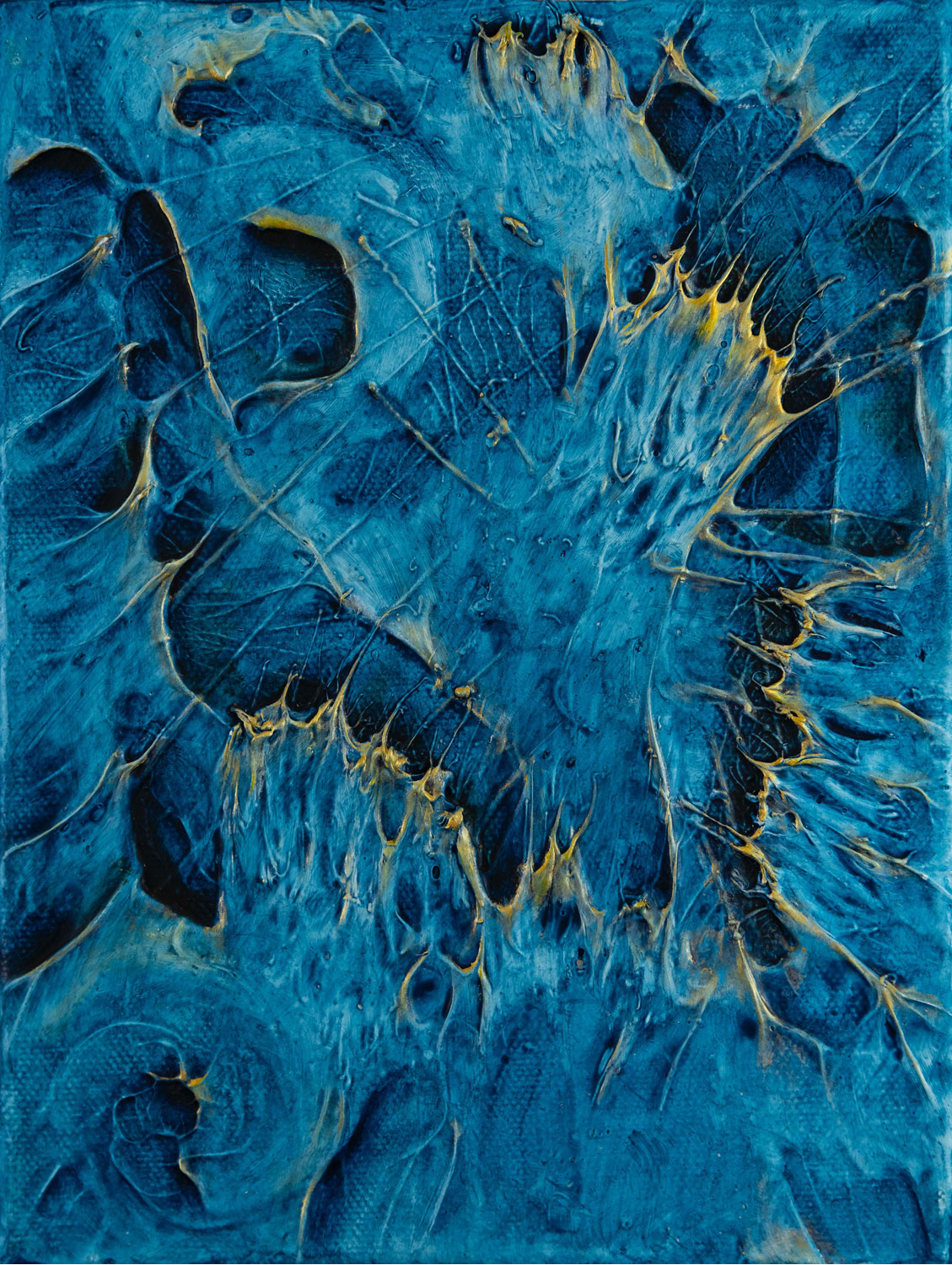
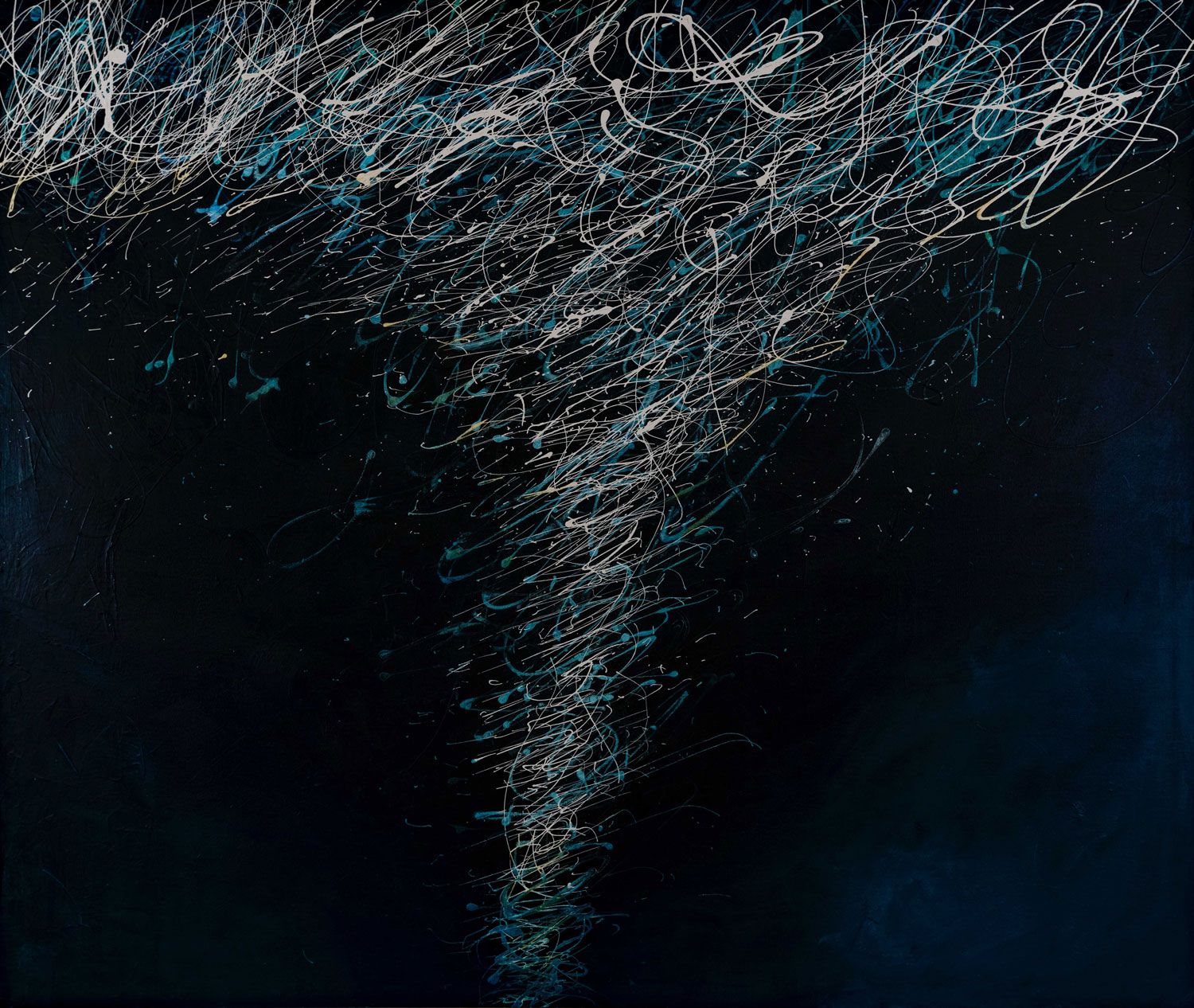
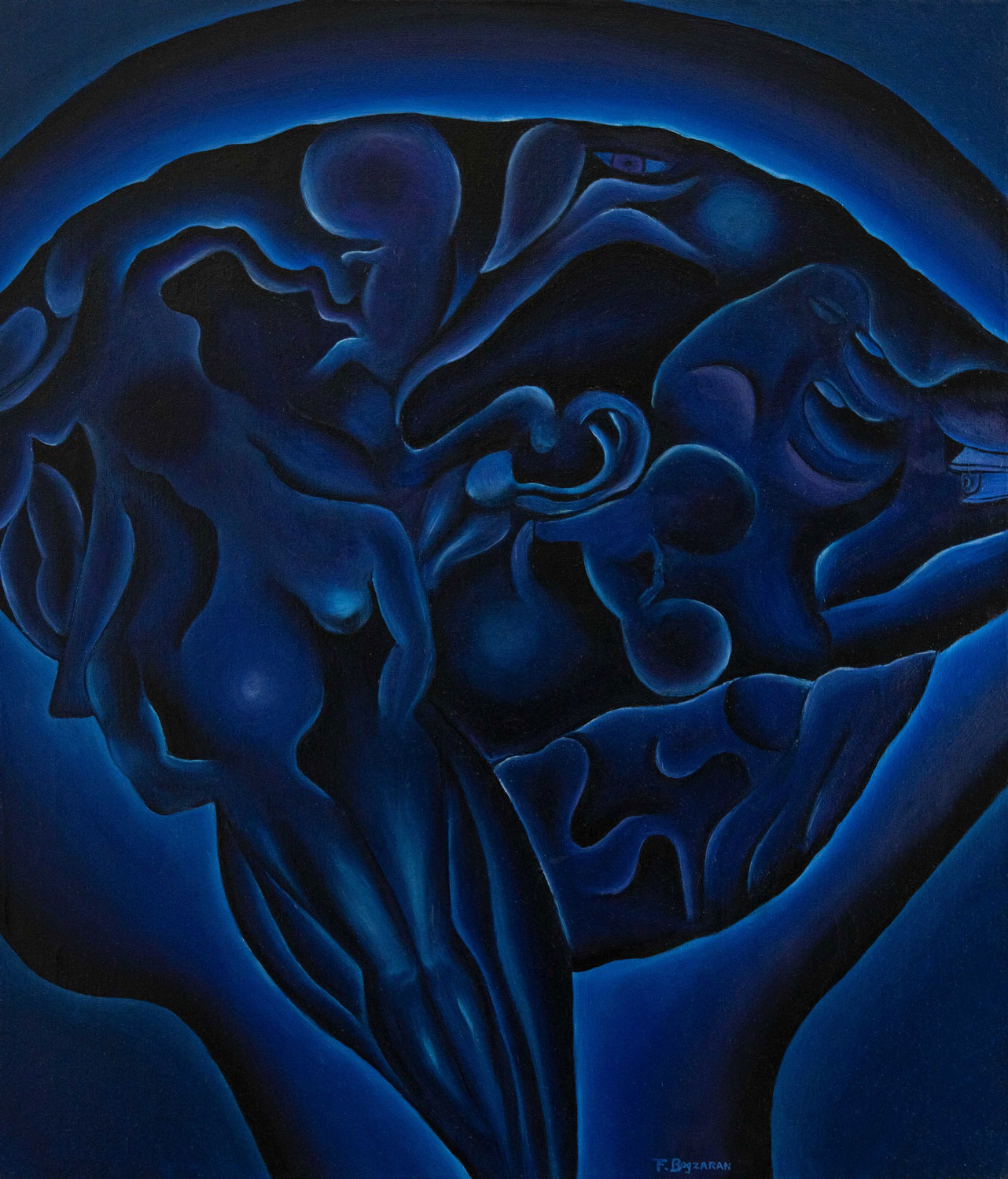
ARTIST AND SCIENTIST FARIBA BOGZARAN ON TAKING A CREATIVE AND HOLISTIC APPROACH TO DREAMS
Interview by Charmaine Li
CHARMAINE LI : Some people say they never remember their dreams and, in turn, I get the feeling that they tend to neglect this part of their lives. Other people notice how dreams can reveal different aspects of their inner lives and, because of this, they deeply value them. How can a person’s attitude towards dreams influence their relationship with them?
FARIBA BOGZARAN : It’s true that remembering dreams is harder for some than others. The relationship with our dreams is very personal and some people prefer not to deal with their dream life at all. I’ve heard many times from students that they’ve had childhood nightmares, or had PTSD, and would rather not remember their dreams. Dreams are like a little door into our inner worlds—some are curious to open the door and some would rather have a nice sleep and not be bothered by it. Nevertheless, whether we remember our dreams or not, the nightly experiences are happening and impact us whether we are conscious of it or not.
For those who want to start remembering their dreams, do you have any techniques to share that might help?
My method of dream recall is simple: motivation, intention and practice. If one is motivated, one can set an intention to remember and then practice it. An effective way of remembering dreams is to have a notebook and a pen next to your bed and before falling asleep to say to yourself, “Tonight I want to remember my dreams,” or, “Tonight when I’m dreaming I want to become lucid.” When you wake up, it helps to not open your eyes immediately and not move from the position where you have woken up. If you remember some parts of the dream, try to stay calm in that dream-like state to find the details of the dream.
In the book ‘Integral Dreaming’ (2012), written by you and Daniel Deslauriers, it says, “Becoming familiar with our dreaming life becomes increasingly important to a life of self-inquiry and self-understanding. Not only do dreams spur insight and personal growth, they also help us understand the creative nature of the mind.” Can you elaborate on how paying attention to dreams and interacting with them can lead to deeper self-knowledge?
As we explore dreams in-depth, it becomes apparent that there’s a level of intelligence inside some of our dreams. The research done by Don Kuiken on impactful dreams and self-realization sheds light on how experiences in dreams can elicit a certain emotional landscape in waking and invoke insights and realizations. Experientially, each person can explore their own dreams and discover this self-knowledge. Through experimentation and self-discovery, it becomes clear we may have only scratched the surface of dreams and that there’s a multidimensional world yet to be explored. As we mentioned in the book, “dreams play an important part in how the self can learn about itself and creatively engage with the world around it.”
« Nevertheless, whether we remember our dreams or not, the nightly experiences are happening and impact us whether we are conscious of it or not. »
3
Could you talk a bit about the Butterfly Dream by Chinese philosopher Chuang Tzu and how the non-interpretive approach encourages a mindset towards dreams that is open, flexible and accepting of uncertainty?
In dream literature, the story of Chuang Tzu and the dream of the butterfly is often quoted to display how in ancient Chinese culture they paid important attention to dreams. I was interested in how Chuang Tzu actually viewed his dream. Taoism is associated with both philosophers: Lao Tzu and Chuang Tzu. If Lao Tzu gave philosophical wisdom for this way, Chuang Tzu grounded it through examples and stories. Chuang Tzu’s story of the butterfly first tells us that in his dream he was a butterfly, but when he woke up he was not sure if he was Chuang Tzu dreaming he was a butterfly or a butterfly dreaming he was Chuang Tzu. This shape-shifting perspective challenges us. We often think we wake up from a dream and then want to interpret it, but what about if we are being dreamed of or if we wake up into another dream? The waking might be the big dream! Chuang Tzu does not question what a butterfly dream means or what it means to be a butterfly. He did not proclaim that a butterfly dream means transformation or freedom. He simply questions and examines his perception and keeps an open mind. The dream might be symbolic and we might interpret it one way but what if it is an experience beyond our limited constructed reality… How do we approach it then?
« We often think we wake up from a dream and then want to interpret it, but what about if we are being dreamed of or if we wake up into another dream? »
How can the non-interpretive approach and interpretative approach complement each other like the yin and yang, as you write?
The non-interpretive approach encourages an immediate encounter with the dream through creative expressions and experiential modalities. It is a way of knowing that is somatic, intuitive and creative. It matches the similar flow of the dream state. For the interpretative part, we chose the word ‘reflective’, which uses the analytical mind by examining and connecting the insight of the dream to one’s life. This integrative method complements each other as the dream first is met in its similar environment and is expressed in different modalities, and then reflected upon.
You’ve explored dreams through science, philosophy and art for a long time now. How did dreams become such a big part of your life?
I discovered hypnagogia and lucid dreaming around the age of seven when I learned to enter into dreams lucidly. Throughout high school, I experimented with lucid dreams and would postulate theses. Early on, I categorized different types of dreams and viewed dreams as a consciousness laboratory, where experiments, incorporations of ideas from waking to dreaming and interactions with the dream landscape through lucidity were possible. The two states of consciousness—dreaming and waking—became a realm of continuous co-creation. Throughout my life, I have made major decisions in collaboration with my dream life. As a result, my waking life became rather unexpected with novel experiences, extraordinary meetings and creations beyond my waking imagination.
« Throughout my life, I have made major decisions in collaboration with my dream life. »
I’m curious to hear about how you learned to lucid dream at age seven. That sounds incredible. Did you cultivate this ability yourself?
This happened because I became very ill with a strange high fever for weeks on end. I would fall asleep with a fever and semi-hallucinate. That’s when I learned to witness the dream and enter dreams lucidly.
I was particularly interested in your perspective on dreams because you have both a scientific and artistic background...
You would be very surprised how common it is for a scientist to be a closeted artist and for an artist to be fascinated with science. Unbeknownst to many, there is a common ground between the two modes of inquiry. These days there is a major trend to bring art and science in dialogue but thirty-five years ago, when I started, it was uncommon. In 1988, when I was working with the Lucidity Project team with researcher Stephen LaBerge exploring the science of lucid dreaming at the Stanford Sleep Lab, I started a series of art projects on EEG polygraph paper tracing the brain wave of a lucid dreamer in the lab. Only a few appreciated it but now it is considered a pioneering work. I also worked with a theater group trying to integrate the science of dreaming with performance and made video art with the same subject. For years, the International Association for the Study of Dreams conferences became the platform for my ideas and work. I didn’t find a big audience outside of that organization, but now those ideas are more mainstream.
Much of your artworks stem from your research of dreams and lucid dreaming. Can you talk a bit about the beginnings of your artistic practice?
The turning point for me was when I took an undergraduate course in neurophysiology and totally fell in love with the function and image of the brain. I incorporated my dreams into the image of the brain. I started a series of paintings, called ‘Pons and Medulla in Dream Reality’ (1981-1982). I was heavily criticized by my painting teachers because the subject was considered utterly weird. But for me, it was the most exciting artwork I had done. From then on, my lucid dreams and hypnagogia became the source of my inspiration.
How do these two disciplines feed off each other in your work?
My scientific research informs my art practice and my art practice inspires my scientific research. They work hand in hand. Of course, my methodology in both science and art has changed throughout the years. I came from hard science, quantitative research to phenomenology and then to art-based research. With my art practice, I started as a photorealist, moved to Surrealism and then into conceptual and multimedia art.
You co-founded the Lucid Art Foundation alongside Robert Anthoine and Surrealist painter Gordon Onslow Ford, and just released a new book titled Gordon Onslow Ford: A Man on a Green Island. How did you and Onslow Ford first meet?
I was fortunate enough to meet and become friends with two of the original Surrealist members, Roberto Matta and Gordon Onslow Ford, as well as interview them for my doctoral research. My meeting with Onslow Ford was through magical synchronicities. I lived on one side of a hill and he lived on the other side—we didn’t know each other. On one side, I was conducting scientific research on the incubation of spiritual experiences in lucid dreaming, from 1987 to 1989. And on the other side, he was making enormous paintings of the worlds similar to my lucid dreams! When I met him in the fall of 1989, I had just finished my thesis, titled ‘Experiencing the Divine in the Lucid Dream State’, and he had just finished the painting titled ‘Divine the Void’ (1989)! Our meeting was an immediate recognition of each other's world. As if we were of the same mind. I was exploring the phenomena of the inner worlds through lucid dreaming and he was exploring it through his paintings. But there were parallel images that he was using that had a reference to the archetype of the abstract imagery in the different dimensions of the lucid mind. It was a significant meeting for both of us because at the time very few people understood his painting or my research. We became friends and collaborators for thirteen years until he passed in 2003.
Can you tell us about your recent book about Onslow Ford?
The book is a homage to a painter who was a visionary and could see the connection between art, science and consciousness. I'm the editor of this book, envisioned the project and worked with an incredible group of art historians, editors and an incredible designer to bring this first comprehensive and beautiful monograph into existence. My extensive chapter on ‘Art and Exploration of Consciousness’ focuses on his early discoveries while reading P. D. Ouspensky’s book Tertium Organum in 1938 and how he was inspired to explore consciousness through his paintings. Though Onslow Ford joined the Surrealists that same year in Paris, his interest lay in exploring the different dimensions of the inner worlds beyond dream narrative or symbolism.
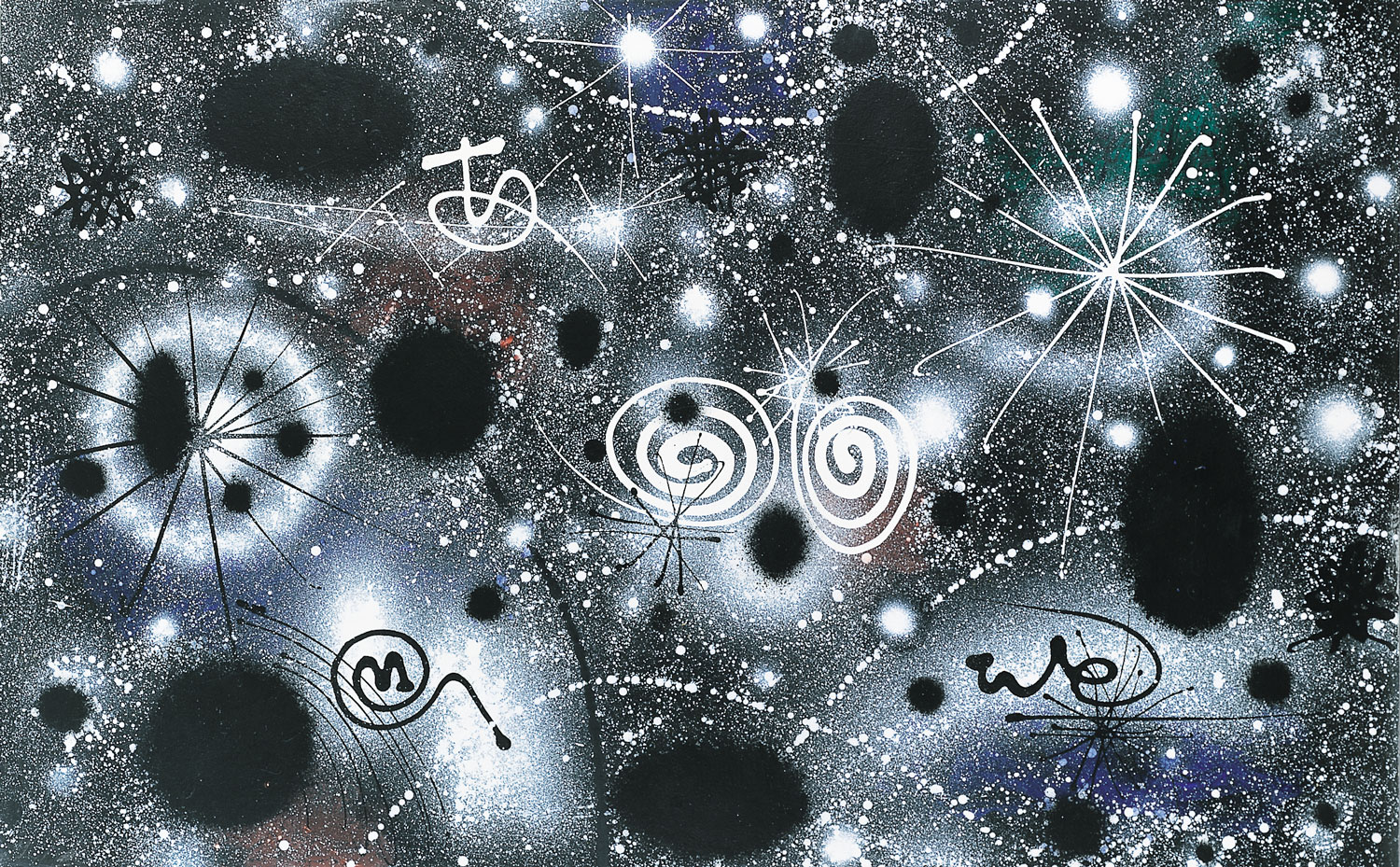
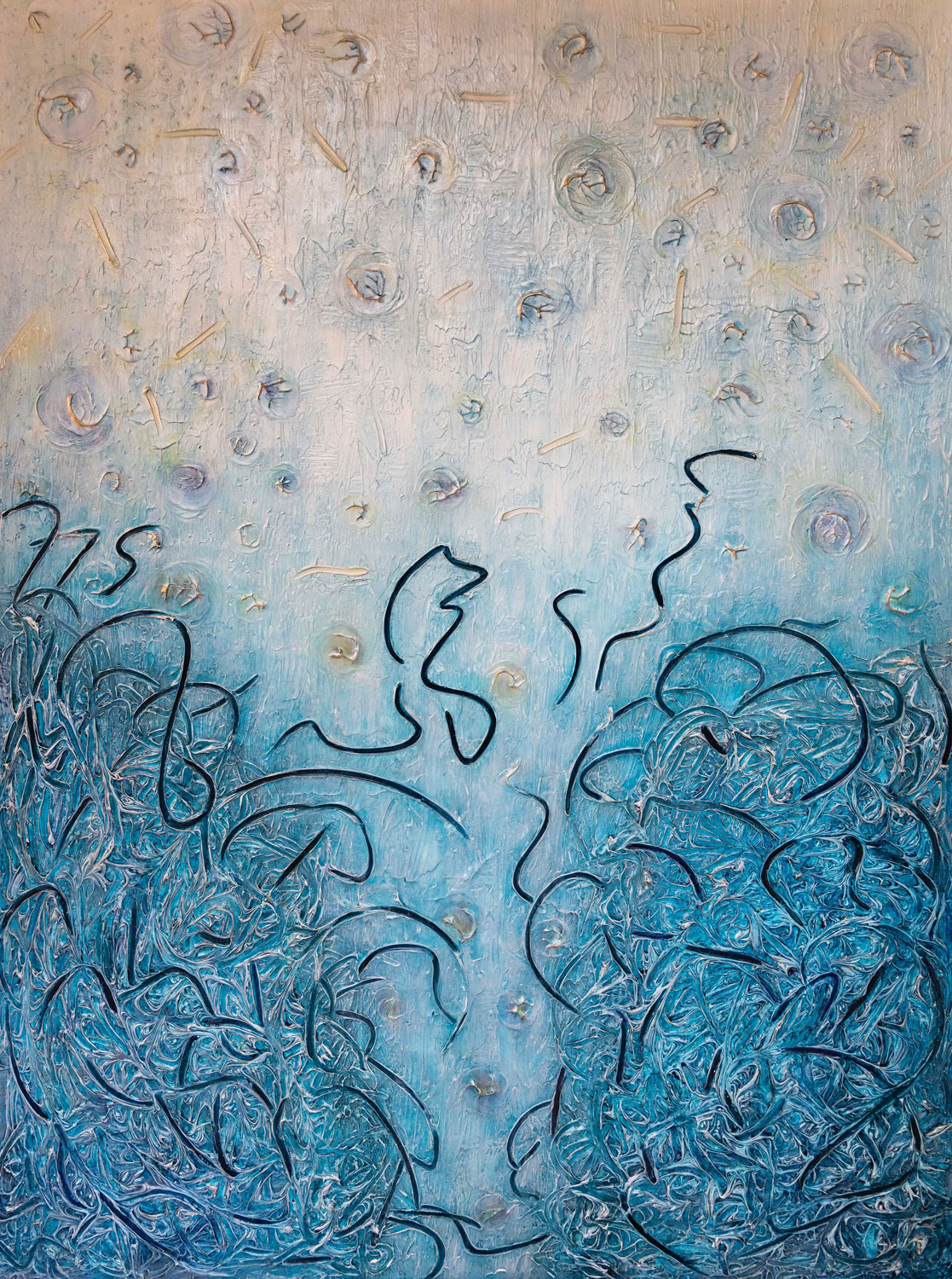
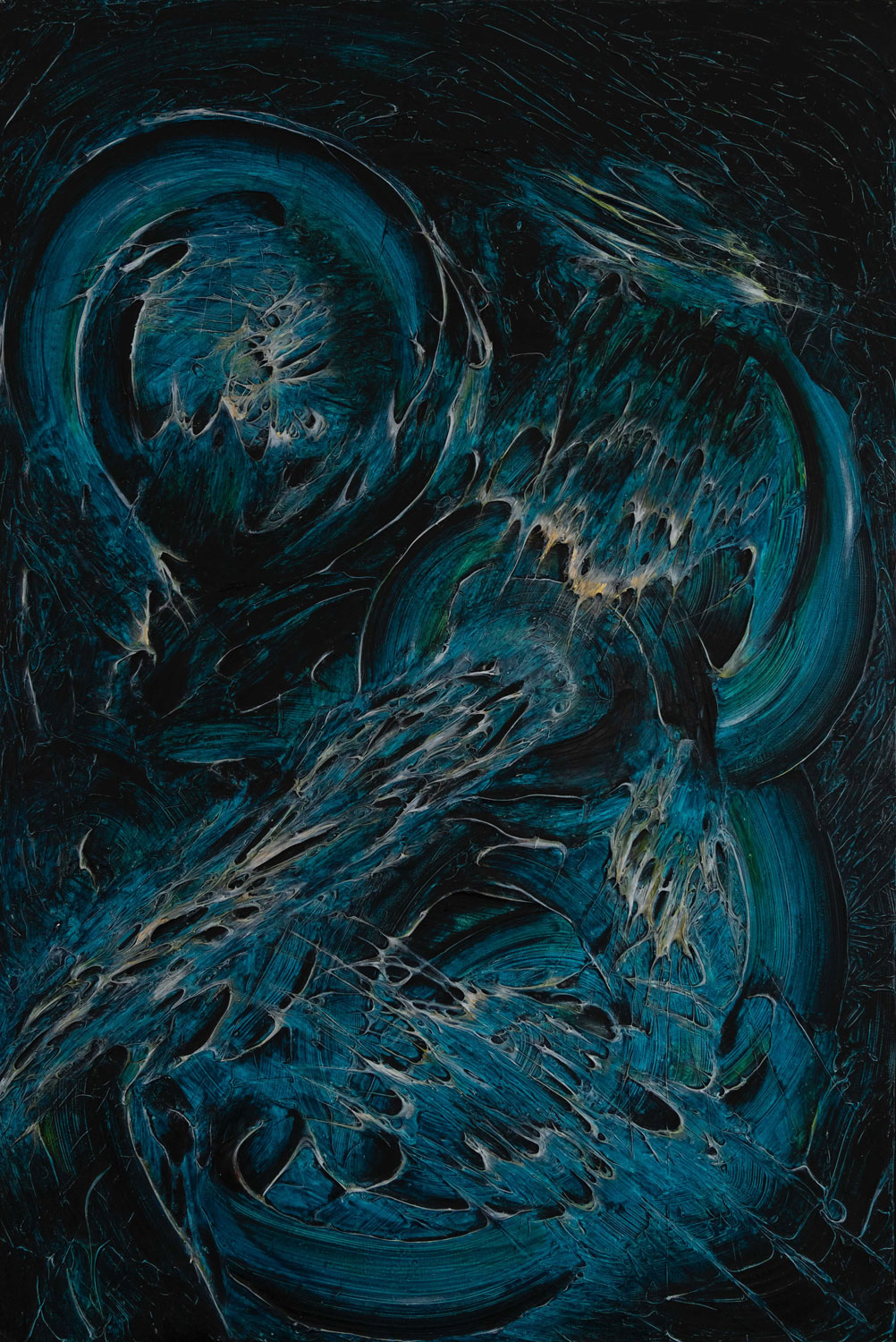
There are many competing dream theories and perspectives and while they’re all insightful in their own way, none of them alone encompasses the multifaceted nature of this phenomena. Can you give us a brief introduction to the term ‘Integral Dreaming’ and how this holistic approach strives to bring these different viewpoints together to offer a new way to view our dreams?
Integral Dreaming encourages the dreamer to be open-minded toward the dream. We took a broader view—that there are many different ways of knowing and approaching dreams—and discuss three main principles: 1) We are complex and multidimensional beings 2) Dreams are complex and multidimensional 3) Viewing dreams has to be multilayered. Integral Dreaming also acknowledges that dreams are viewed differently from many disciplines and there are overlaps between disciplines, such as science, art, psychology or shamanic, but they’re all just different paradigms of viewing dreams. Each has its own contribution to dream function, understanding and discovery. Some of these disciplines might not even agree with each other, but within the Integral Dreaming approach, we gave a platform for each viewpoint to gain a deeper realization about this phenomena.
You’ve said before that oftentimes when people look at dreams, there’s an assumption that as soon as we have a dream, we need to interpret it or find meaning. What does it mean to look at dreams from a non-interpretive approach?
There are different types of dreams and different approaches to them. Some dreams beg for understanding immediately and others need to be unfolded over time if need be. With the non-interpretative approaches, they’re creative ways of being with dreams. Automatic writing, which is writing without thinking, is my favorite. After writing a dream down, follow it by automatic writing. Within this practice, one gets in touch with the flow of consciousness while the dream is fresh in one’s mind and insights often arise from this state of flow. There are many expressive art approaches, such as drawing, movement, theater or embodiment of the dream.
This is one component of the ‘Integral Dream Practice’ outlined in your book, which you describe as using “a wide range of methods to address a single dream, first non-interpretive and then reflectively”.
Within the Integral Dream Practice, there are two main phases: reflexive and reflective. The ‘reflexive’ phase consists of the playful creative, non-interpretive processes, like automatic writing, that make up one way of being with the dream. And if one wishes to continue and bridge the dream with day-to-day life then entering the ‘reflective’ phase is helpful. I stay away from using ‘interpretative’ because it is filled with presuppositions.
Is the non-interpretive approach more common in Eastern philosophy?
It depends on what philosophy or culture. In certain Eastern cultures, they are very serious about dream interpretation. My study of Eastern philosophy was focused on Taoism and Buddhism. Naturally coming from that background, it impacted the way I approach dreams. The first verse of Lao Tzu's book ‘Tao Te Ching’ says: “The Tao that is spoken of is not a true Tao.” One can draw much from this one verse. It challenges us about our assumptions: How do we know that what we give meaning in a dream is the true meaning of that dream? In the ‘Integral Dreaming’ book, I brought in the Taoist approach as a philosophical ground for non-interpretative approach by looking at the possibilities and potential in the dream.
4
What kind of artworks are you working on at the moment?
I am working on two series: ‘On the Fringe’ and ‘Involution’. ‘On the Fringe’ started with a lucid dream in 2002 and has evolved into a new genre in art, which I’m also doing art-based research on. ‘Involution’ is part of a series I call ‘Blue is Turning,’ which addresses the current condition of the ocean. As a long distance ocean swimmer, I’ve had first-hand experience with plastic pollution in the ocean and observed the bleaching of corals as the ocean warms up. I had a recurrent dream of oceanic dreams over 25 years ago—one in particular in which a mother whale jumped out of the water and communicated to me that his brothers and sisters were dying. Since then I’ve made an attempt to annually visit the whales, read about ocean pollution, be a supporter of ocean conservation and bring consciousness through my art.
« I see fluidity between dreaming and waking consciousness. »
How do you engage with your dreams on a day-to-day basis?
I see fluidity between dreaming and waking consciousness. Of course, there are physiological differences but there is a continuous flow of consciousness from one state to another. When I wake up in the morning, I spend some time reflecting on my dream experiences. If they leave a strong impression on me or I recognize them as impactful dreams, I write them down and begin living with them, unfolding them or reflecting on them. I might make a decision based on the insight I received from a dream, engage in a creative action or share the dream. If they are big dreams, they become an integral part of my life. I might stay with one dream for a very long time. Overall, I'm interested in the quality of dreams, not the quantity of them. I see my waking and dream life as one continuous thread and I am the weaver, trying to make a lucid tapestry.
THE INTERVIEW HAS BEEN EDITED AND CONDENSED. PHOTOGRAPHS OF FARIBA BOGZARAN’S ARTWORKS BY SINA DEHGHANI.
Appendix
- ‘Extraordinary Dreams’ (2002) by Stanley Krippner, Fariba Bogzaran and André de Carvalho
- ‘Integral Dreaming’ (2012) by Fariba Bogzaran and Daniel Deslauriers
- Lucid Art Foundation
- ‘Gordon Onslow Ford: A Man on a Green Island’ edited by Fariba Bogzaran.
- International Association for the Study of Dreams
GO DEEPER INTO THE ARCHIVE PAGE
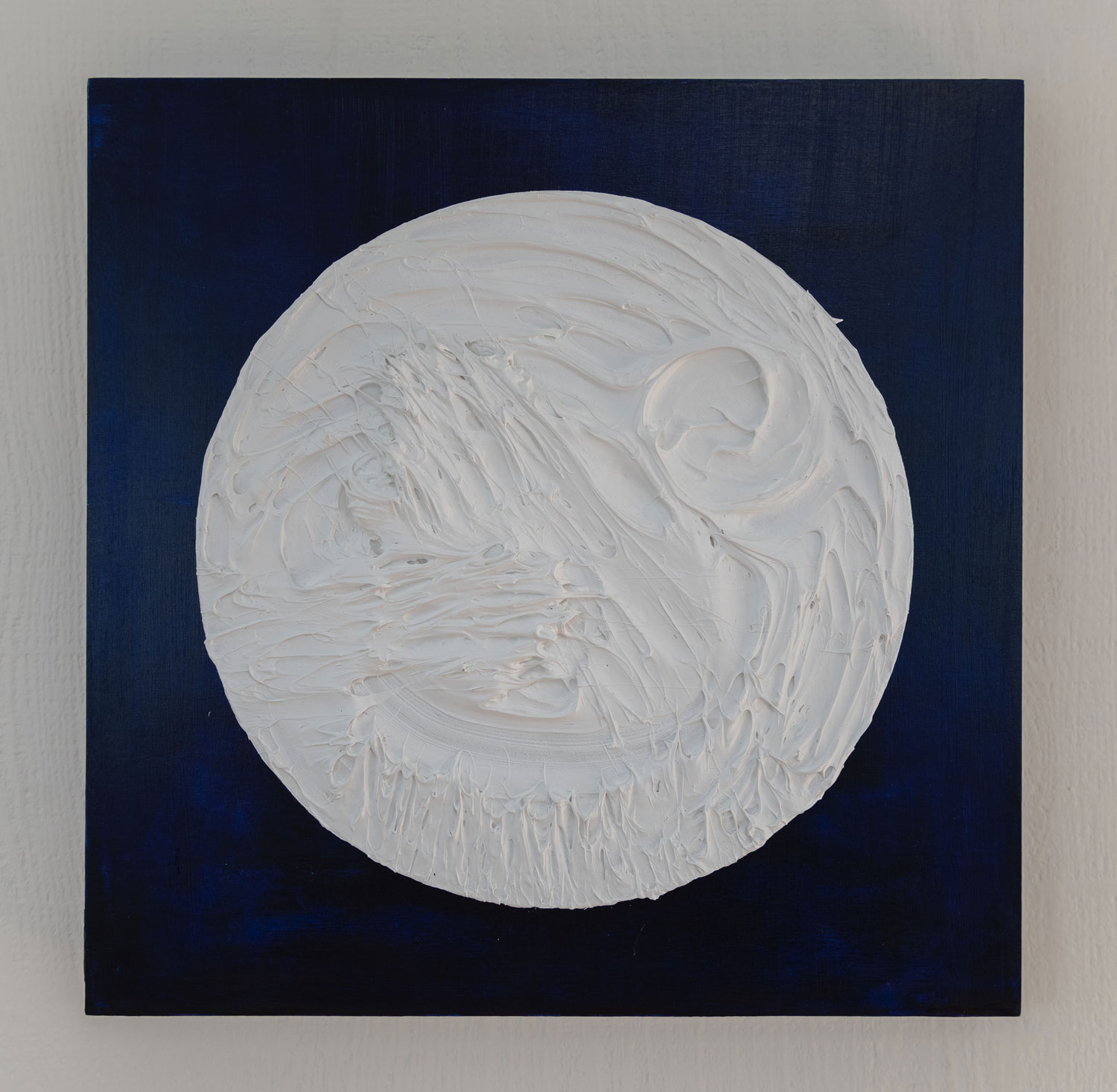
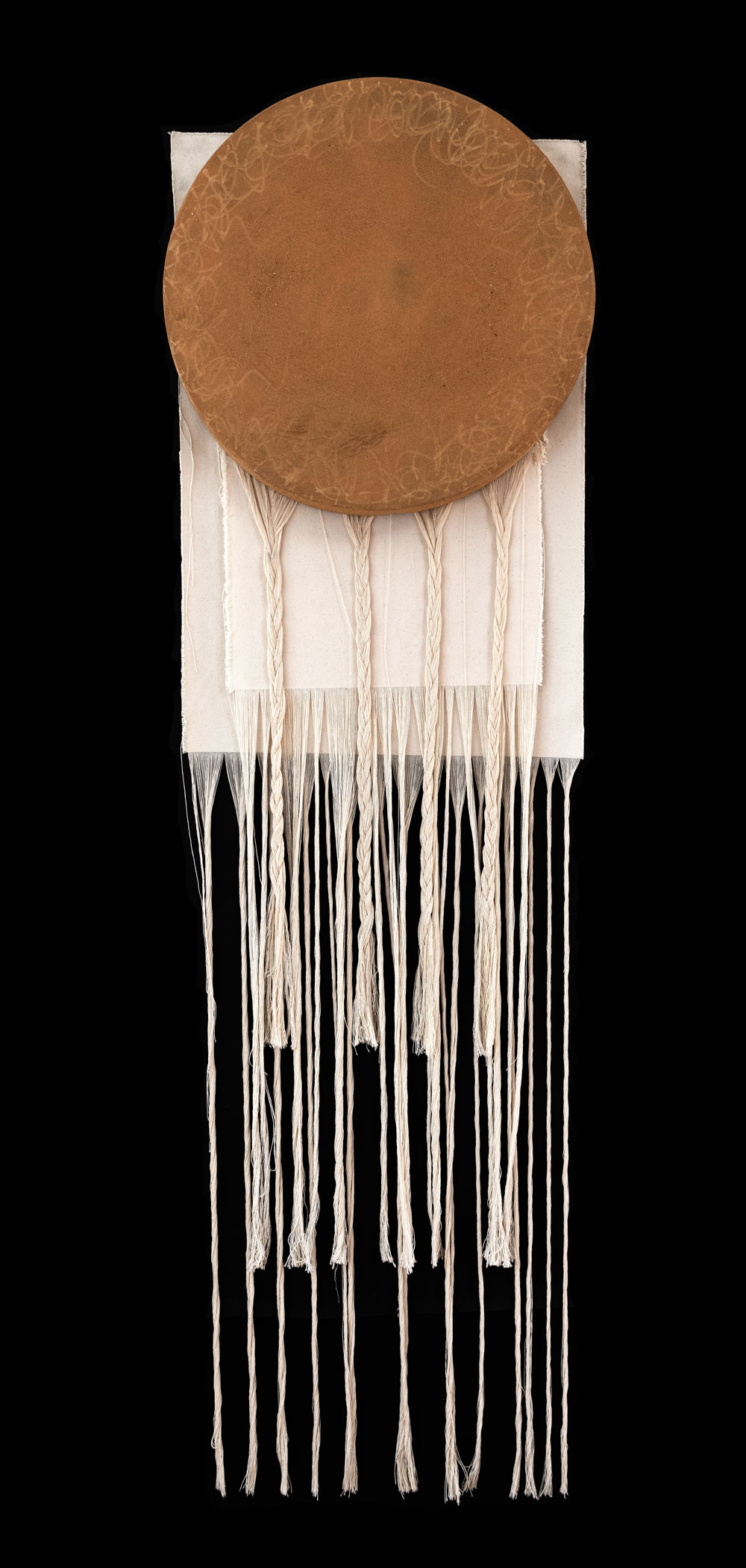
Could you talk a bit about the Butterfly Dream by Chinese philosopher Chuang Tzu and how the non-interpretive approach encourages a mindset towards dreams that is open, flexible and accepting of uncertainty?
In dream literature, the story of Chuang Tzu and the dream of the butterfly is often quoted to display how in ancient Chinese culture they paid important attention to dreams. I was interested in how Chuang Tzu actually viewed his dream. Taoism is associated with both philosophers: Lao Tzu and Chuang Tzu. If Lao Tzu gave philosophical wisdom for this way, Chuang Tzu grounded it through examples and stories. Chuang Tzu’s story of the butterfly first tells us that in his dream he was a butterfly, but when he woke up he was not sure if he was Chuang Tzu dreaming he was a butterfly or a butterfly dreaming he was Chuang Tzu. This shape-shifting perspective challenges us. We often think we wake up from a dream and then want to interpret it, but what about if we are being dreamed of or if we wake up into another dream? The waking might be the big dream! Chuang Tzu does not question what a butterfly dream means or what it means to be a butterfly. He did not proclaim that a butterfly dream means transformation or freedom. He simply questions and examines his perception and keeps an open mind. The dream might be symbolic and we might interpret it one way but what if it is an experience beyond our limited constructed reality…
How do we approach it then?
How can the non-interpretive approach and interpretative approach complement each other like the yin and yang, as you write?
The non-interpretive approach encourages an immediate encounter with the dream through creative expressions and experiential modalities. It is a way of knowing that is somatic, intuitive and creative. It matches the similar flow of the dream state. For the interpretative part, we chose the word ‘reflective’, which uses the analytical mind by examining and connecting the insight of the dream to one’s life. This integrative method complements each other as the dream first is met in its similar environment and is expressed in different modalities, and then reflected upon.
You’ve explored dreams through science, philosophy and art for a long time now. How did dreams become such a big part of your life?
I discovered hypnagogia and lucid dreaming around the age of seven when I learned to enter into dreams lucidly. Throughout high school, I experimented with lucid dreams and would postulate theses. Early on, I categorized different types of dreams and viewed dreams as a consciousness laboratory, where experiments, incorporations of ideas from waking to dreaming and interactions with the dream landscape through lucidity were possible. The two states of consciousness—dreaming and waking—became a realm of continuous co-creation. Throughout my life, I have made major decisions in collaboration with my dream life. As a result, my waking life became rather unexpected with novel experiences, extraordinary meetings and creations beyond my waking imagination.
« We often think we wake up from a dream and then want to interpret it, but what about if we are being dreamed of or if we wake up into another dream? »
5
« Throughout my life, I have made major decisions in collaboration with my dream life. »
I’m curious to hear about how you learned to lucid dream at age seven. That sounds incredible. Did you cultivate this ability yourself?
This happened because I became very ill with a strange high fever for weeks on end. I would fall asleep with a fever and semi-hallucinate. That’s when I learned to witness the dream and enter dreams lucidly.
I was particularly interested in your perspective on dreams because you have both a scientific and artistic background...
You would be very surprised how common it is for a scientist to be a closeted artist and for an artist to be fascinated with science. Unbeknownst to many, there is a common ground between the two modes of inquiry. These days there is a major trend to bring art and science in dialogue but thirty-five years ago, when I started, it was uncommon. In 1988, when I was working with the Lucidity Project team with researcher Stephen LaBerge exploring the science of lucid dreaming at the Stanford Sleep Lab, I started a series of art projects on EEG polygraph paper tracing the brain wave of a lucid dreamer in the lab. Only a few appreciated it but now it is considered a pioneering work. I also worked with a theater group trying to integrate the science of dreaming with performance and made video art with the same subject. For years, the International Association for the Study of Dreams conferences became the platform for my ideas and work. I didn’t find a big audience outside of that organization, but now those ideas are more mainstream.
Much of your artworks stem from your research of dreams and lucid dreaming. Can you talk a bit about the beginnings of your artistic practice?
The turning point for me was when I took an undergraduate course in neurophysiology and totally fell in love with the function and image of the brain. I incorporated my dreams into the image of the brain. I started a series of paintings, called ‘Pons and Medulla in Dream Reality’ (1981-1982). I was heavily criticized by my painting teachers because the subject was considered utterly weird. But for me, it was the most exciting artwork I had done. From then on, my lucid dreams and hypnagogia became the source of my inspiration.
How do these two disciplines feed off each other in your work?
My scientific research informs my art practice and my art practice inspires my scientific research. They work hand in hand. Of course, my methodology in both science and art has changed throughout the years. I came from hard science, quantitative research to phenomenology and then to art-based research. With my art practice, I started as a photorealist, moved to Surrealism and then into conceptual and multimedia art.
6
You co-founded the Lucid Art Foundation alongside Robert Anthoine and Surrealist painter Gordon Onslow Ford, and just released a new book titled Gordon Onslow Ford: A Man on a Green Island. How did you and Onslow Ford first meet?
I was fortunate enough to meet and become friends with two of the original Surrealist members, Roberto Matta and Gordon Onslow Ford, as well as interview them for my doctoral research. My meeting with Onslow Ford was through magical synchronicities. I lived on one side of a hill and he lived on the other side—we didn’t know each other. On one side, I was conducting scientific research on the incubation of spiritual experiences in lucid dreaming, from 1987 to 1989. And on the other side, he was making enormous paintings of the worlds similar to my lucid dreams! When I met him in the fall of 1989, I had just finished my thesis, titled ‘Experiencing the Divine in the Lucid Dream State’, and he had just finished the painting titled ‘Divine the Void’ (1989)! Our meeting was an immediate recognition of each other's world. As if we were of the same mind. I was exploring the phenomena of the inner worlds through lucid dreaming and he was exploring it through his paintings. But there were parallel images that he was using that had a reference to the archetype of the abstract imagery in the different dimensions of the lucid mind. It was a significant meeting for both of us because at the time very few people understood his painting or my research. We became friends and collaborators for thirteen years until he passed in 2003.
Can you tell us about your recent book about Onslow Ford?
The book is a homage to a painter who was a visionary and could see the connection between art, science and consciousness. I'm the editor of this book, envisioned the project and worked with an incredible group of art historians, editors and an incredible designer to bring this first comprehensive and beautiful monograph into existence. My extensive chapter on ‘Art and Exploration of Consciousness’ focuses on his early discoveries while reading P. D. Ouspensky’s book Tertium Organum in 1938 and how he was inspired to explore consciousness through his paintings. Though Onslow Ford joined the Surrealists that same year in Paris, his interest lay in exploring the different dimensions of the inner worlds beyond dream narrative or symbolism.
What kind of artworks are you working on at the moment?
I am working on two series: ‘On the Fringe’ and ‘Involution’. ‘On the Fringe’ started with a lucid dream in 2002 and has evolved into a new genre in art, which I’m also doing art-based research on. ‘Involution’ is part of a series I call ‘Blue is Turning,’ which addresses the current condition of the ocean. As a long distance ocean swimmer, I’ve had first-hand experience with plastic pollution in the ocean and observed the bleaching of corals as the ocean warms up. I had a recurrent dream of oceanic dreams over 25 years ago—one in particular in which a mother whale jumped out of the water and communicated to me that his brothers and sisters were dying. Since then I’ve made an attempt to annually visit the whales, read about ocean pollution, be a supporter of ocean conservation and bring consciousness through my art.
7
« I see fluidity between dreaming and waking consciousness. »
How do you engage with your dreams on a day-to-day basis?
I see fluidity between dreaming and waking consciousness. Of course, there are physiological differences but there is a continuous flow of consciousness from one state to another. When I wake up in the morning, I spend some time reflecting on my dream experiences. If they leave a strong impression on me or I recognize them as impactful dreams, I write them down and begin living with them, unfolding them or reflecting on them. I might make a decision based on the insight I received from a dream, engage in a creative action or share the dream. If they are big dreams, they become an integral part of my life. I might stay with one dream for a very long time. Overall, I'm interested in the quality of dreams, not the quantity of them. I see my waking and dream life as one continuous thread and I am the weaver, trying to make a lucid tapestry.
THE INTERVIEW HAS BEEN EDITED AND CONDENSED. PHOTOGRAPHS OF FARIBA BOGZARAN’S ARTWORKS BY SINA DEHGHANI.